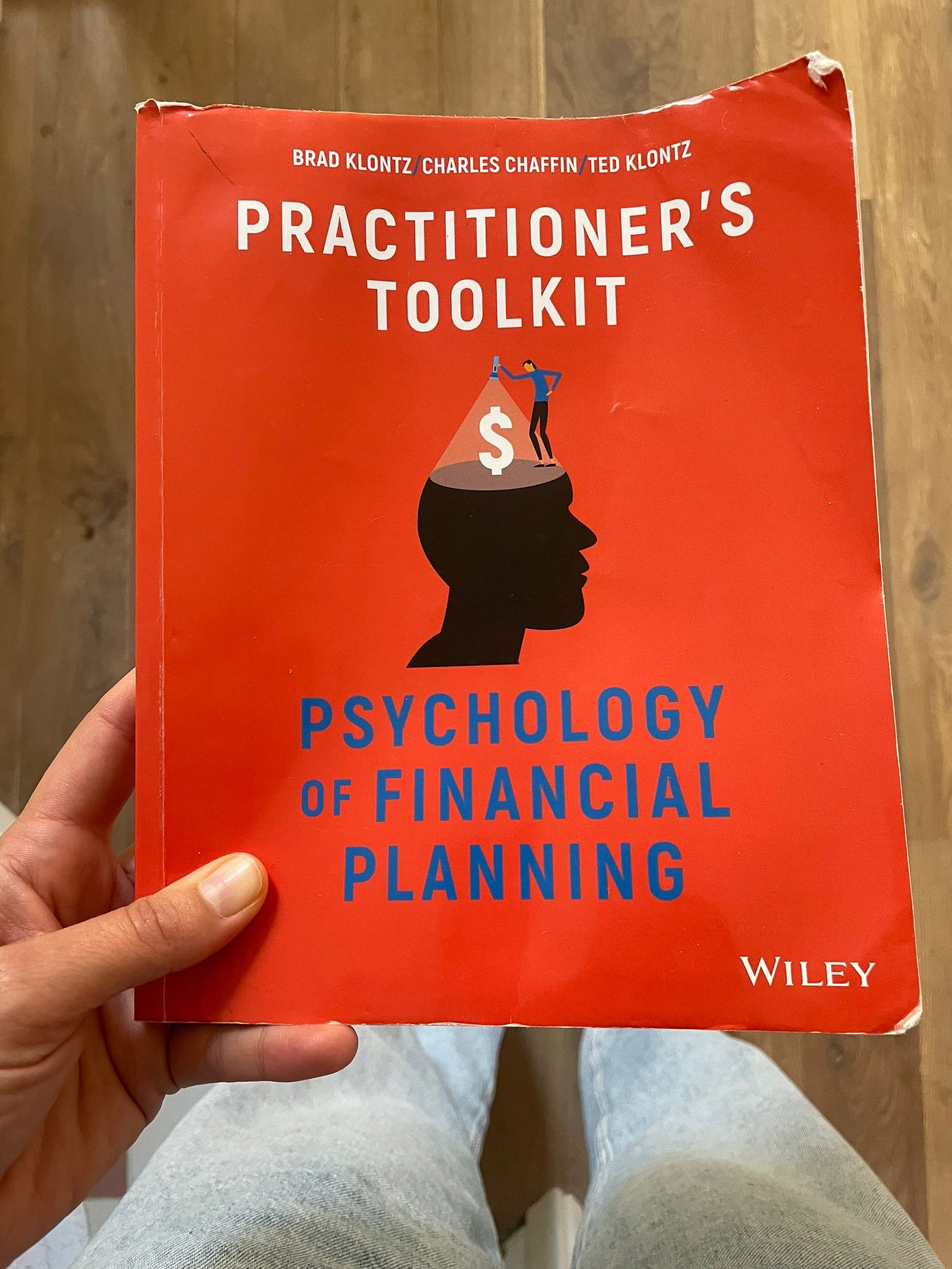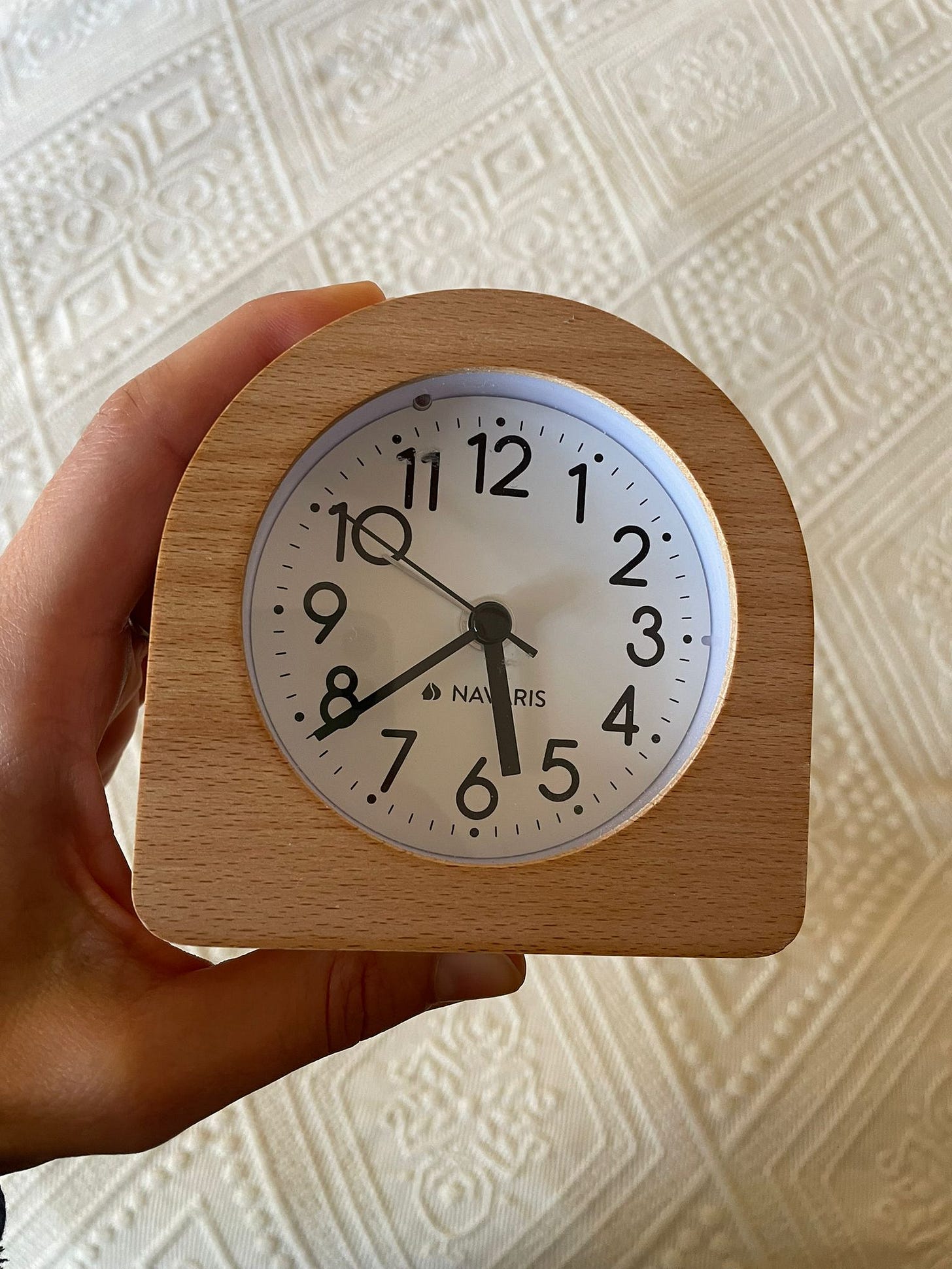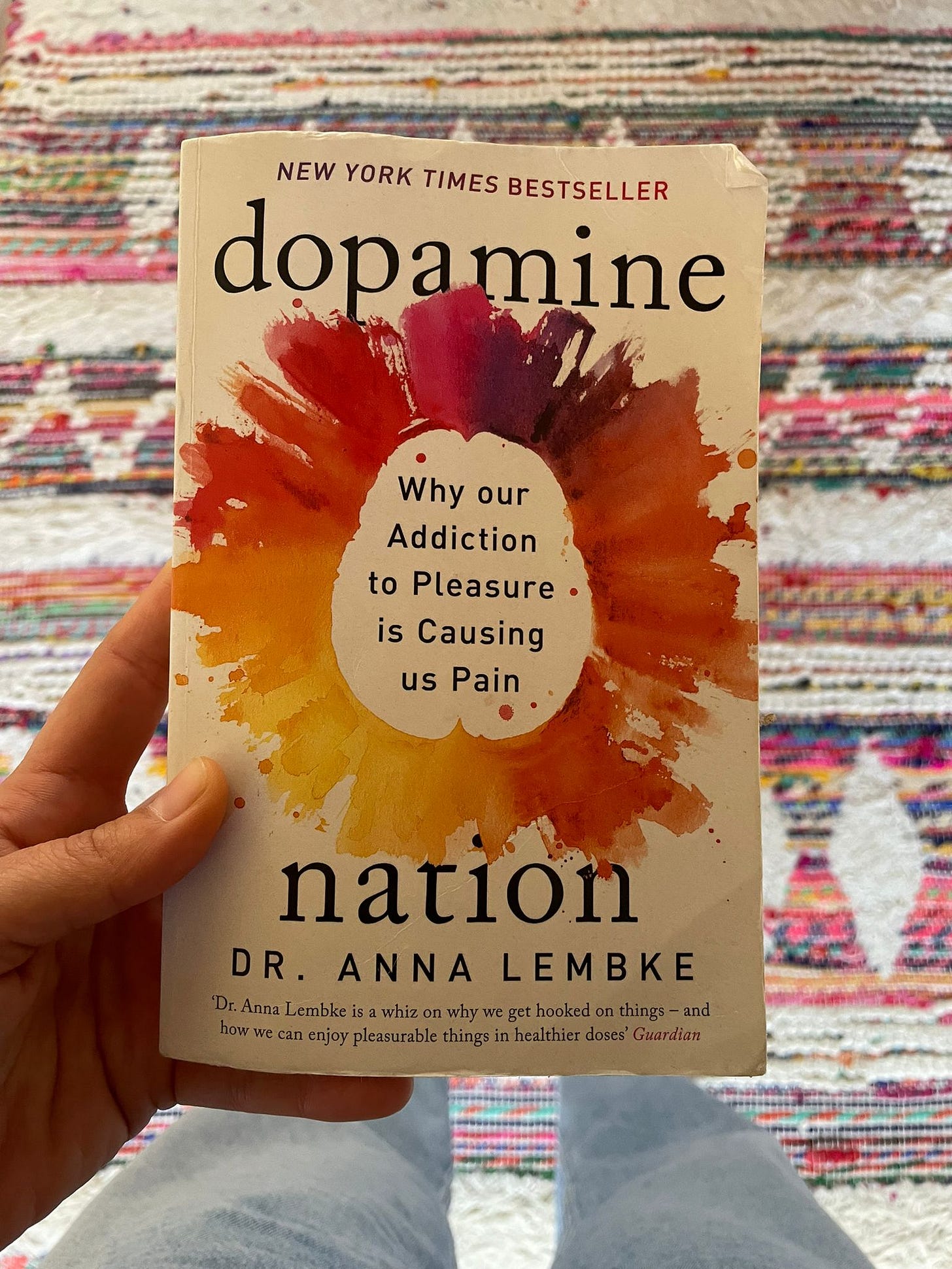🟣 Think You Can Pass the Compulsive Buying Test?
✨ A dopamine-fueled session that might change how you shop forever.
Good morning, dopamine lovers!
Dopamine is the buzzword shaking up both the world of psychology and finance.
If you haven’t noticed it yet, get ready—you will. (It’s the Baader-Meinhof phenomenon or frequency illusion, a cognitive bias where, once you hear about something for the first time, it suddenly pops up everywhere).
You’ll start noticing conversations around the dopamine treadmill, dopamine purchases, dopamine menus, dopamine dressing, dopamine loop, Dopamine Nation, dopamine culture, or dopamine beauty.
If this all sounds foreign to you, buckle up and enjoy your new Money Feelings session dedicated to one of the reasons you:
Click “add to cart” at 2 a.m.
Binge-watch entire TV series in one sitting
Overeat junk food
Get addicted to unhealthy relationships
👇👇👇
Here’s what’s in store for today’s session:
🎬 Binge on the dopamine drama that's wrecking your budget.
🪞 Take the test to see if you show signs of compulsive buying.
💪 Choose your challenge to make more intentional purchases.
🎨 Put together your own dopamine menu—I’ll design it for you!
🎬 And, Action!
You're sprawled on the couch, phone in hand, the glow lighting up your face. Your thumb scrolls effortlessly through your favorite shopping app.
ON SCREEN: A flashing SALE banner and product images fly by.
You promised yourself you'd stick to the budget this month. But then you saw it. The new Pradel Trench from the K-WAY x Sœur collaboration.
You immediately think:
It's on sale. Just for today.
Ok. You don’t really need it. And you know you can’t afford it.
A moment of hesitation, then—
YOU (V.O.)
“It’s a limited offer... On a limited edition collab. And it rains a lot here. And it’s like a trench AND a raincoat in one. I’ll figure out how to cover it later.”
Your thumb hovers over the "Buy Now" button. A beat. Then, the inevitable tap.
Here’s what’s really happening
Your dopamine-driven urge for instant gratification overrides your financial goals, leading you to spend impulsively, even when you know it’ll hurt your budget in the long run.Shopping activates your brain’s reward system, giving you a hit of the feel-good hormone dopamine, also known as “the Kim Kardashian of neurotransmitters.”
Dopamine controls your brain’s reward and pleasure centers, ensuring you chase those hits.
And dopamine doesn’t discriminate.
A necessary purchase or an impulse splurge? All the same.
An important fact about dopamine that people often forget: Dopamine is not just released when we experience pleasure—it’s also released in anticipation of experiencing this pleasure.
Let’s break it down in our shopping context.
Say I order the new Pradel Trench from the K-WAY x Sœur collaboration 🤤. Of course, I'll get a dopamine hit when I wear it. But I’ll get hits at every stage leading up to that:
✨ When I see pictures of it.
✨ When I spot it on sale.
✨ When I add it to my cart.
✨ When I get the “order confirmed” email.
✨ When I track the shipping notifications.
✨ When I finally open the package.
All these steps contribute to the shopper’s high and mean we get more excited over online purchases than when buying things in physical stores.
You might think, "That’s a lot of pleasure for one trench/raincoat. Maybe it’s worth the money?"
Nice try 😉
The catch: the more your brain gets that hit, the more it craves the next one, locking you into a dopamine loop:
🟣 Dopamine hit.
🟣 Dopamine dip.
🟣 Repeat.
As Anna Lembke, psychiatrist, addiction expert, and author of the brilliant Dopamine Nation, explains:
“For every high, there’s a low.”
Retailers and online shopping apps know precisely how to hack your brain. Think flash sales, limited-time offers, newsletters, and notifications.
Social media cranks this up even more, with influencers flaunting their hauls, feeding your fear of missing out (FOMO), and keeping that dopamine loop strong.
This is all part of what’s known as limbic capitalism. Companies design their products and marketing to trigger the limbic system—your brain’s emotional and reward center—making it harder for you to resist the instant gratification of buying.
This cycle chips away at your financial self-control, driving impulse purchases, keeping you from building a consistent savings habit, and leaving you vulnerable to financial instability in the future.
And it doesn’t stop there.
It also steals your focus.
It undermines your ability to make thoughtful, long-term financial decisions, leading to financial procrastination.
Not worried about financial matters? Maybe this will resonate more with you:
It’s tanking your mental health.
So yeah, I don’t know about you, but all of this leaves me hating my phone and social media, scared for my kids, and to the point where I’d happily give all my savings for everyone to get off social media.
Before that happens, let’s do some introspection and see what we can do to break that dopamine loop.
🪞 Introspection Time: Do You Show Signs of Compulsive Buying?
This test is directly taken from financial psychology specialist Brad Klontz’s book:
In the words of Klontz:
The Klontz Money Behavior Inventory was designed as a quick measure of financial behaviors. It is not designed to “diagnose” a behavioral problem but rather to be a quick screener to flag potential concerns.
Please indicate how strongly you agree with the following statements using the following scale: 1 = Strongly Disagree, 2 = Disagree, 3 = Disagree a Little, 4 = Agree a Little, 5 = Agree, 6 = Strongly Agree.
My spending feels out of control.
I obsess about shopping.
I buy more things than I need or can afford.
I feel irresistible urges to shop.
I shop to forget about my problems and make myself feel better.
I feel guilt and/or shame after making purchases.
I often return items because I feel bad about buying them.
I have tried to reduce my spending but have had trouble doing so.
I hide my spending from my partner/family.
I feel anxious or panicky if I am unable to shop.
Shopping interferes with my work or relationships.
Now, calculate the sum you end up with.
Divide it by 11, and you will get your score.
Scoring key:
Scores lower than or equal to 3: Suggests you do not exhibit significant signs of this money behavior.
Scores between 3 and 4: Suggests you exhibit some signs of the money behavior.
Scores higher than 4: Suggests you exhibit many signs of the money behavior.
📌 You can also go deeper and do this longer test online.
Choose Your Challenge for Making Intentional Purchases
I’m suggesting different challenges this month. Please don’t overwhelm yourself—pick one or a couple, and let me know which ones in the comments. This will significantly increase your accountability and chances of success!
🟣 1. Unsubscribe from all your fashion marketing emails. Spoiler: You won’t miss them—like, ever. Here’s a tip: I didn’t dedicate specific time to unsubscribe from all my fashion newsletters. I deleted them as I received them, and I got a dopamine hit every time I pressed the unsubscribe button because I felt proud of myself and knew it was a small action for the planet!
🟣 2. Delete all your social media apps and shopping apps.Drastic? Not at all. Just download them when you need something or decide to spend time on them, being intentional and dedicating specific time to engage with them.
This will create enough friction so you don’t check your phone every 45 seconds. And yes, that includes Substack—sorry!
You might also start enjoying social media again. For instance, I love my Sunday evening ritual of posting something on Instagram.
And sometimes, I break my rule because I’m not a monster.
🟣 3. Invest in one item that will replace something your phone does.This is Money Feelings-approved shopping! It could be a watch so you don’t need to check your phone to see the time, or an alarm clock so you don’t bring your phone into the bedroom (because it makes it harder to fall asleep, increases restless nights, causes eye strain, leads to poor posture, later bedtimes, less intimacy with your partner, and prompts you to click “add to cart” at 2 a.m.).
💜 I have this basic one. If you choose this challenge, please share a photo of your clock in the comments. (Could this be the start of a movement to keep phones out of the bedroom?)
🟣 4. Read "Dopamine Nation" by Anna Lembeck.As someone who only truly loves to read novels, I was surprised by how much I enjoyed this book.
🟣 5. Try a “no-spend challenge”.Set a specific timeframe for avoiding non-essential purchases. Don’t choose an overly long timeframe—start small, even with just three days! This challenge will remind you that not every want needs to be fulfilled immediately and often reveals how many of our purchases are triggered by emotions.
🟣 6. Create your dopamine menu.Not all TikTok trends are useless; some are even there to help us spend less time on TikTok.
A dopamine menu is your own curated list of activities that will give you a boost whenever you need it, which doesn’t involve scrolling and buying.
While I can’t point you to empirical research proving that crafting your dopamine menu will eliminate your impulsive shopping habits, I can say this: making mine brought me a lot of joy—and probably a few dopamine hits, too. After I finished, my husband suggested I lie down so I wouldn’t hurt myself from all the bouncing around.
💜 What would be on your dopamine menu? Let me know in the comments, and I’ll design it for you!
This is mine 👇
🟣 7. Ask for helpWe all need support sometimes to navigate challenging situations. Asking for help is a smart and courageous strategy, not a weakness! Maybe your challenge this month is to take that step.
I’ve got an ever-expanding list of recommendations here, plus some deals for paid subscribers to make these products and services more accessible.
👏👏👏 Well done for dedicating the last 8 minutes to your financial well-being!
I hope you enjoyed this session. If you did, let me know—it would make my day! You can tap the 💜 below, invite a friend to check out Money Feelings (get a free month of paid access when three friends subscribe), or subscribe so you don’t miss our next session, which is going to be very special 🔥🔥🔥
Pauline 💜













Just made my own dopamine menu as well - you should share on LinkedIn too! So fun :)
My dopamine menu:
Breakfast
- listening to someone else showering or cleaning the kitchen from bed
- remembering that I laid out my outfit the night before
- going for a run
Lunch
- making a joke at work that someone laughs at
- getting a message from my husband randomly during the day
Dinner
- when I cook a meal from scratch and everyone eats it
- when my daughter sings at the dinner table
Dessert:
- a bowl of granola and milk
- reading until I go cross eyed